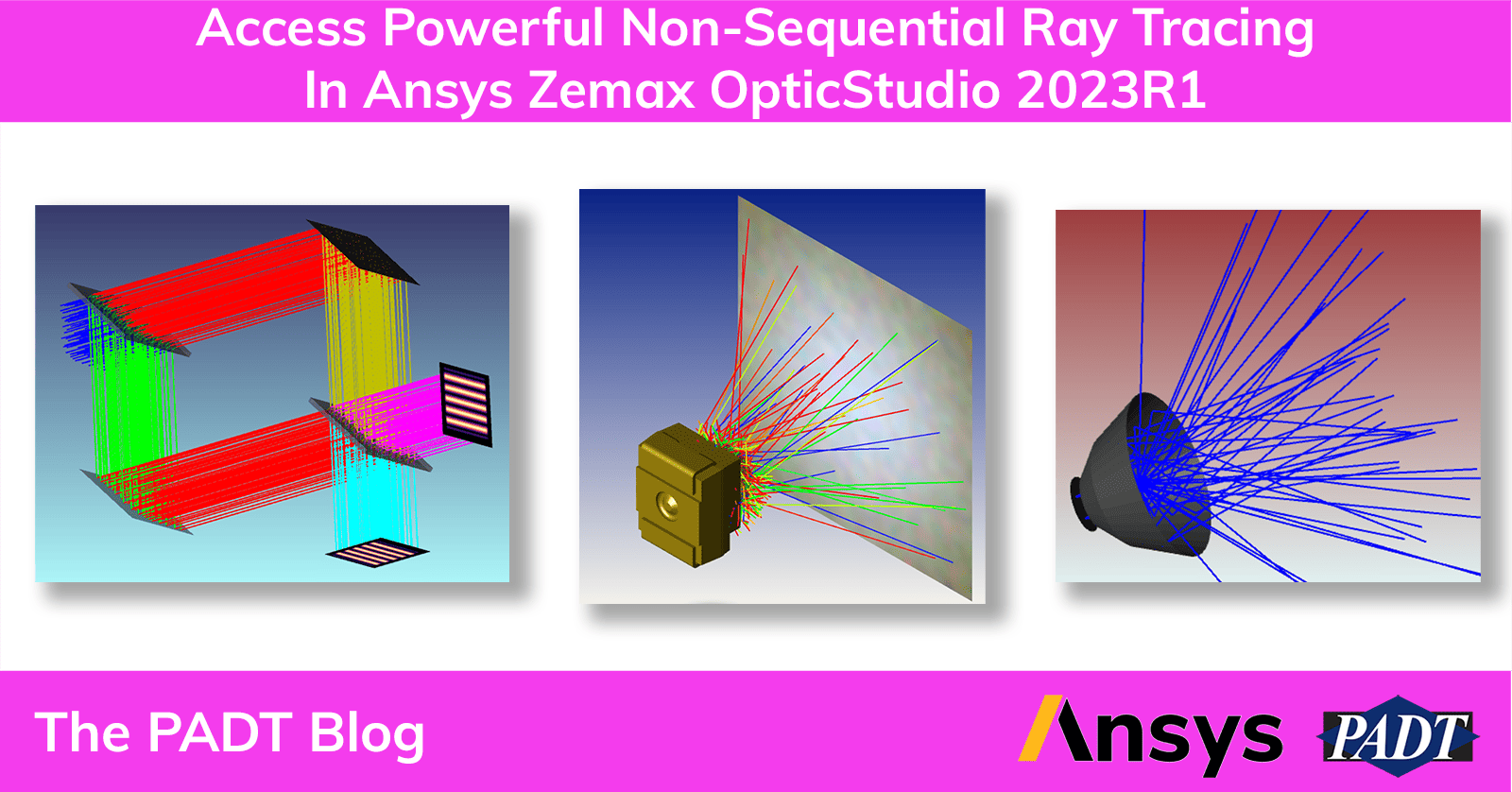Starting with the Ansys Zemax OpticStudio 2023R1 release, following the successful migration of Zemax into Ansys, the legacy “Standard” license of Zemax OpticStudio will no longer be available to its users. For those with legacy Standard licenses, only sequential ray tracing has been available. Now with the new Ansys Zemax OpticStudio licensing model, every license will now have access to non-sequential ray tracing.
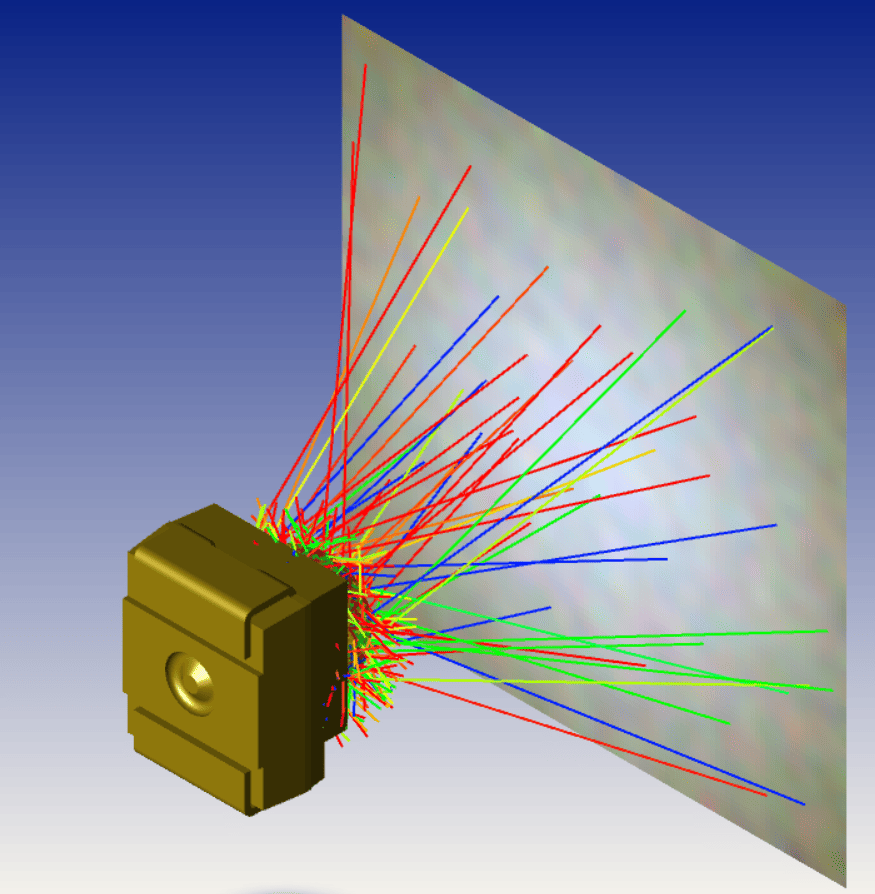
Non-Sequential Mode in Ansys Zemax OpticStudio is a powerful tool used to design illumination systems as well as perform stray light and scatter analyses. Non-Sequential Mode can also calculate the absorbed flux of a volumetric object and can even model coherence of systems like interferometers. Ansys Zemax OpticStudio is the world leading optical design software, however, its Non-Sequential Mode tends to be a road less travelled for most of its users – hopefully, this will change with the access of Non-Sequential mode to all Ansys Zemax OpticStudio license holders.
Why is it that not all Zemax OpticStudio users are familiar with Non-Sequential Mode, even if it has been included in some of the Zemax OpticStudio licenses? For starters, most imaging and beam propagation systems are accurately represented with sequential ray tracing. In sequential ray tracing, rays propagate from one surface to the next, in a predetermined manner starting at the object and ending at the image plane. This means that ray paths are limited, and rays cannot hit a surface more than once. For most optical systems, this approach accurately captures the performance of the system while requiring much less computation time.
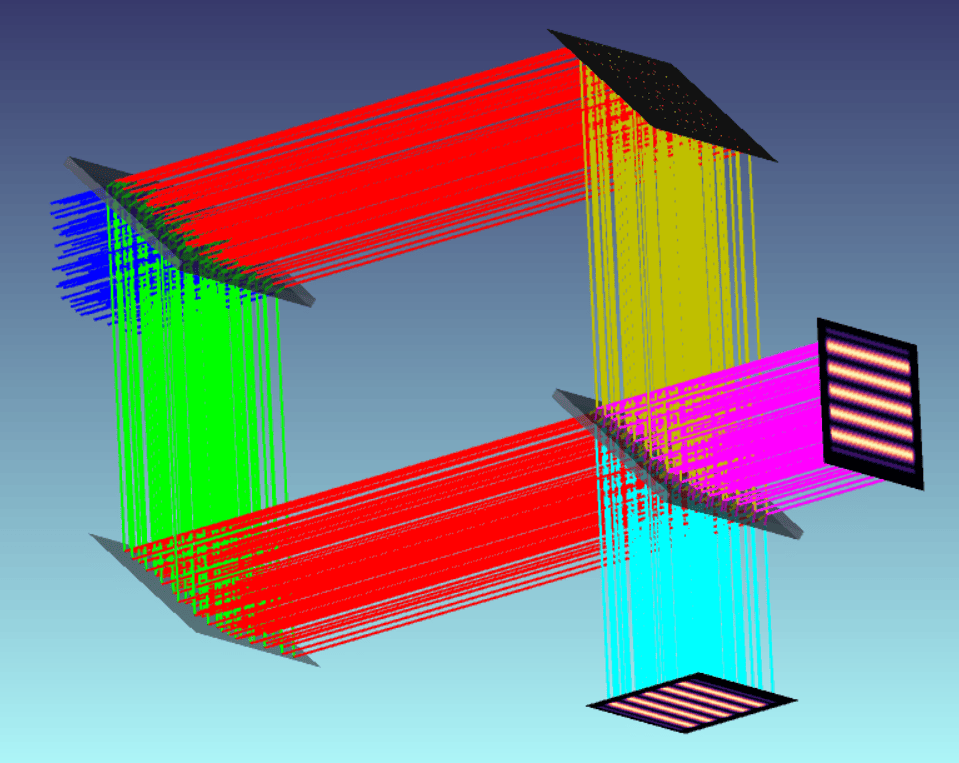
What is Non-Sequential Ray Tracing?
Non-sequential ray tracing is when rays are traced in an optical system and are not restricted to a strict sequence of surfaces. It tends to be more complex and take longer to simulate, however, the benefits to using non-sequential varies depending on the application. Non-sequential ray tracing models objects in three dimensions, so the position and the properties of objects are taken into account as rays propagate. The direction of the propagating rays is also considered, and the rays can hit objects more than once. Examples where non-sequential ray tracing can more accurately represent an optical system are: illumination systems, prisms, light pipes, and volume objects.
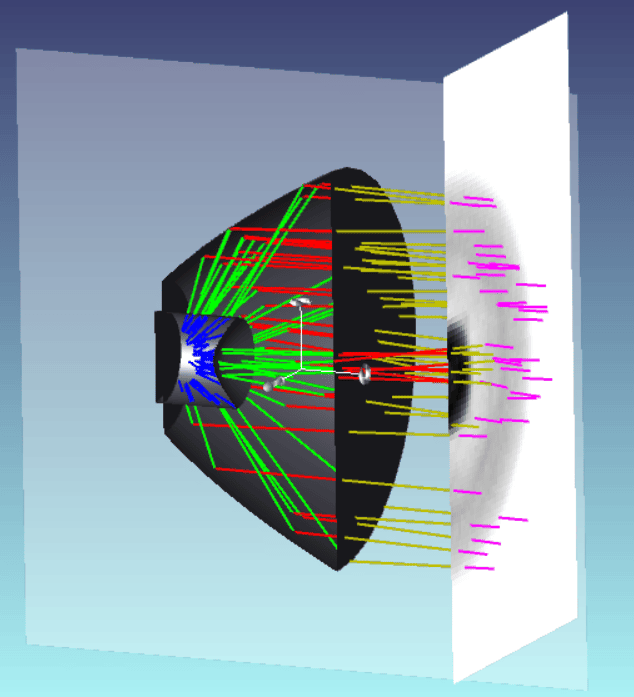
In Ansys Zemax OpticStudio’s Non-Sequential Mode, a source and a detector must be defined by the user. The physical properties and location must be defined, and a system can have more than one source and detector. Luckily, there are plenty of sources and detector types to choose from in Non-Sequential Mode, including 3D detectors for complex system analysis.
A benefit to using Non-Sequential Mode is that rays can be split or scattered. The behavior of the ray when it hits a surface or object is determined by the defined coating or scatter profile. Coatings are defined using a coating catalog, just as in sequential mode, however, because objects can have multiple surfaces and can be three-dimensional, different coatings can be applied to different faces of a non-sequential object. The same is true for scattering properties. Non-sequential ray tracing can provide a more accurate and comprehensive look into the stray light within the optical system, especially when including the CAD design of the system.
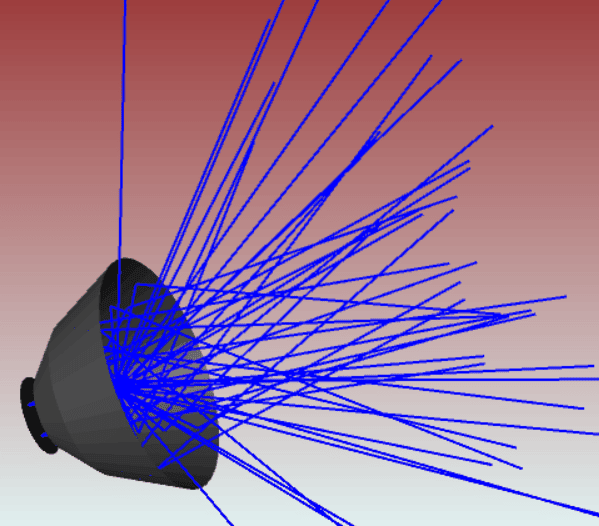
Given that non-sequential ray tracing takes more time and resources to propagate rays through a system, it can be cumbersome to run a large system in Non-Sequential Mode, especially when only parts of the design require non-sequential ray tracing. Ansys Zemax OpticStudio allows users to use a combination of sequential and non-sequential ray tracing in a single system using Mixed Mode. In Mixed Mode, a set of non-sequential objects are defined within a non-sequential group which is part of a larger sequential system.
There can be multiple non-sequential groups within a sequential system. Rays propagating through the sequential system enter the non-sequential group through an entrance port and exit through an exit port. A Mixed Mode design is great for systems that only include a couple of non-sequential objects, like CAD objects or prisms, within a larger sequential system.
Hopefully, with non-sequential ray tracing being provided for all Ansys Zemax OpticStudio licenses, users will begin to explore more complex systems within the powerful tool that is Non-Sequential Mode.
As always, please feel free to reach out to us here at PADT for more information on Ansys Zemax OpticStudio, other Ansys Optics products like Ansys Speos and Ansys Lumerical, as well as any other of your simulation needs!
Until next time!

